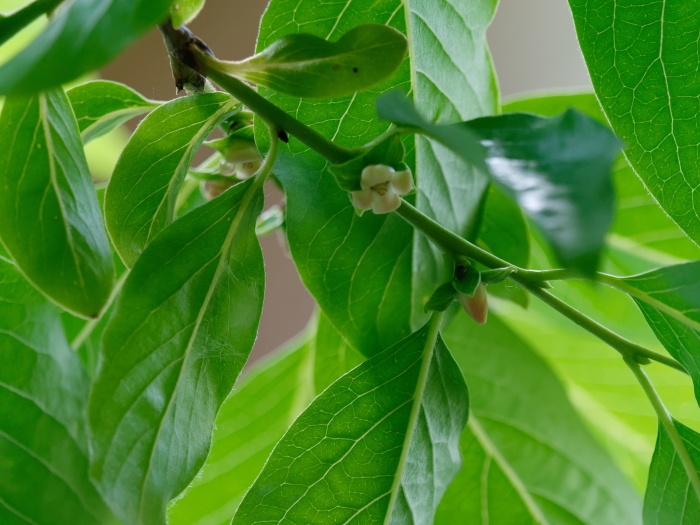Date-Plum
(Diospyros lotus)
Date-Plum (Diospyros lotus)
/
/

olrett
CC BY-SA 4.0
Image By:
olrett
Recorded By:
Copyright:
CC BY-SA 4.0
Copyright Notice:
Photo by: olrett | License Type: CC BY-SA 4.0 | License URL: http://creativecommons.org/licenses/by-sa/4.0/ | Rights Holder: olrett | Publisher: iNaturalist | Date Created: 2022-05-27T16:32:42-07:00 |

























Estimated Native Range
Summary
Diospyros lotus, commonly known as Date-plum or Caucasian Persimmon, is a deciduous tree native to woodland margins, rocky slopes, and open areas in temperate Asia and Southeast Europe. It typically grows to a height of 49 to 98 feet (15 to 30 meters) and is known for its attractive, rounded crown. The leaves are broad, glossy, and dark green, turning to shades of yellow, red, or purple in the fall, adding to its ornamental value. The small, inconspicuous greenish flowers appear in June and July, followed by the small, yellow to orange berries that are edible and have a sweet taste reminiscent of plums and dates.
The Date-plum is valued for its drought tolerance and its ability to thrive in a variety of soil types, though it prefers well-drained, loamy soils. It is often used in urban landscapes, as a fruit tree in gardens, and for its ornamental foliage that provides seasonal interest. The fruit is not only edible but also historically significant, having been consumed since ancient times in Greek and Persian cultures. While it is not commonly afflicted by serious diseases or pests, it can suffer from root rot if planted in poorly drained soils. The tree is also known for its hard, valuable wood. In cultivation, it requires full sun to part shade and moderate watering, with less frequent watering once established.CC BY-SA 4.0
The Date-plum is valued for its drought tolerance and its ability to thrive in a variety of soil types, though it prefers well-drained, loamy soils. It is often used in urban landscapes, as a fruit tree in gardens, and for its ornamental foliage that provides seasonal interest. The fruit is not only edible but also historically significant, having been consumed since ancient times in Greek and Persian cultures. While it is not commonly afflicted by serious diseases or pests, it can suffer from root rot if planted in poorly drained soils. The tree is also known for its hard, valuable wood. In cultivation, it requires full sun to part shade and moderate watering, with less frequent watering once established.CC BY-SA 4.0
Plant Description
- Plant Type: Shrub, Tree
- Height: 39-49 feet
- Width: 20-30 feet
- Growth Rate: Slow, Moderate
- Flower Color: Green, White
- Flowering Season: Summer
- Leaf Retention: Deciduous
Growth Requirements
- Sun: Full Sun
- Water: Medium
- Drainage: Medium
Common Uses
Bird Garden, Edible*Disclaimer: Easyscape's listed plant edibility is for informational use. Always verify the safety and proper identification of any plant before consumption., Low Maintenance
Natural Habitat
Woodland margins, rocky slopes, and open areas in temperate Asia and Southeast Europe
Other Names
Common Names: Lilac Persimmon, Caucasian Persimmon
Scientific Names: , Diospyros lotus, Dactylus trapezuntinus, Diospyros calycina, Diospyros lotus f. ellipsoidea, Diospyros lotus f. globosa, Diospyros lotus f. longifolia, Diospyros lotus f. ovoidea, Diospyros lotus var. angustifolia, Diospyros lotus var. laevis
GBIF Accepted Name: